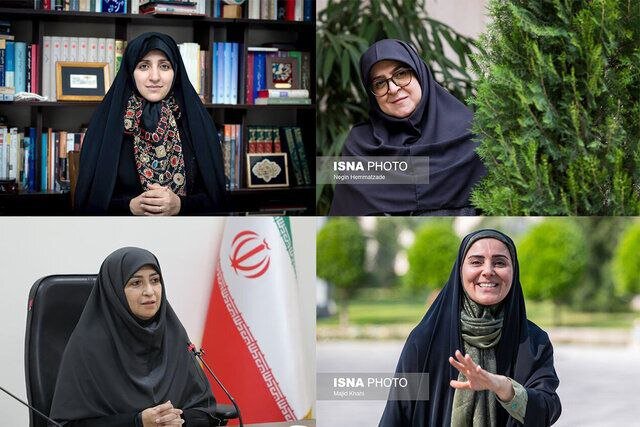Administration fulfills ‘women in management’ promise

TEHRAN –The appointment of 70 women in management positions proves the current administration has fulfilled its promise to appoint women in managerial positions.
“I believe that women’s involvement in top management and decision-making positions is their right and a key to the development of the country.
My goal is to increase the share of women in managerial positions in the country based on meritocracy and justice.
I recognize the right of women’s political participation, and I will promote the status of women’s affairs in the administration,” President Masoud Pezeshkian had said during election campaigns.
The fact that 70 women were chosen for management positions, many of them were assigned for the first time, indicates that the current administration seeks to create opportunities for women to play their roles in managerial positions, ISNA reported.
Currently, four women hold top managerial positions in the cabinet, namely transport and urban development minister, Farzaneh Sadeq, government spokesperson Fatemeh Mohajerani, Department of Environment head, Shina Ansari, and vice president for women and family affairs, Zahra Behrouz-azar.
First vice president Mohammad-Reza Aref has stressed that “no discrimination between men and women is acceptable in the governance system, and we must witness the promotion of women’s position in the decision-making system.”
In this regard, the appointment of women was not limited to cabinet, and Kowsar Yousefi became the head of the supervisory board of the Central Bank and Zohreh Alipour was appointed as the head of Iran Privatization Organization.
Although no woman was elected as the governor general, Sudabeh Zarghamnejad, Samira Hassani, Esmat Mohammad-doost, Batul Moallem, Jamileh Qaei-Pasha, and Shadi Fazli were elected as the governors of Dehgolan, Rudbar, Khomam, Sarvestan, northern Savadkoh, and Kuhpayeh, respectively.
The number of high-ranking women has risen noticeably compared to the past, and it is said to keep increasing in the future.
Women empowered after Islamic Revolution
The status of women in various fields was improved after the Islamic Revolution and women, as half of the country’s population, have been leading in many fields.
After the victory of the Islamic Revolution in February 1979 by toppling the Pahlavi regime [the last Iranian royal dynasty, ruling for almost 54 years between 1925 and 1979], women were given equal rights to shape their futures. The Islamic Revolution provided them a chance to build their distinct identity and they have been tremendously successful in doing that.
There were extensive changes in the fields of science, education, economy, employment, and presence in management positions for women. Now a large part of activists in various fields of academia, business, and management are made up of capable Iranian women.
Education as a social value for women is seen as real freedom for them. Illiteracy among women and girls has been nearly eradicated as the literacy rate reached 99.3 percent and the ratio of female to male students has increased by 28 percent.
According to the latest data, nearly 60 percent of all university students are females today. The percentage of women in higher education has increased nearly 21 times since the Revolution.
The notable presence of women in the education sector has had a remarkable impact on the job market of the country as well, with women taking more jobs in both the public and private sectors.
The labor force of the country today consists mostly of women specialists, which indicates that women are playing an important role in shaping the future of Iran.
A report by the World Bank shows that the number of female board members in various organizations has seen a three-fold increase, growing from 11 percent in 1970 before the Revolution to 30 percent in 2016 after the Revolution.
During the last 44 years after the Revolution, the number of female faculty members in universities has grown more than 17 times. The share of women in university faculty members has increased by 33.3 percent, and in medical sciences universities by 34 percent.
Only 1.4 percent of teaching staff was made up of women before the Revolution and now the number stands at above 24 percent in higher education.
A ten-fold increase in the number of women doctors could be seen between 1979 and 2012, according to some data, and nearly 40 percent of all specialized physicians in Iran today are women.
MT/MG
Leave a Comment